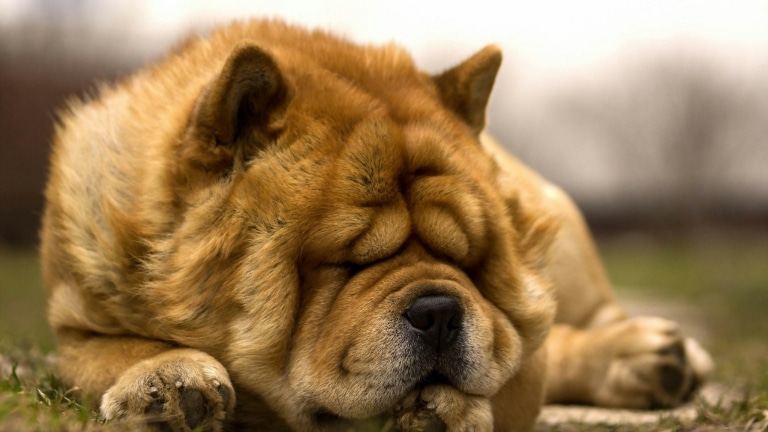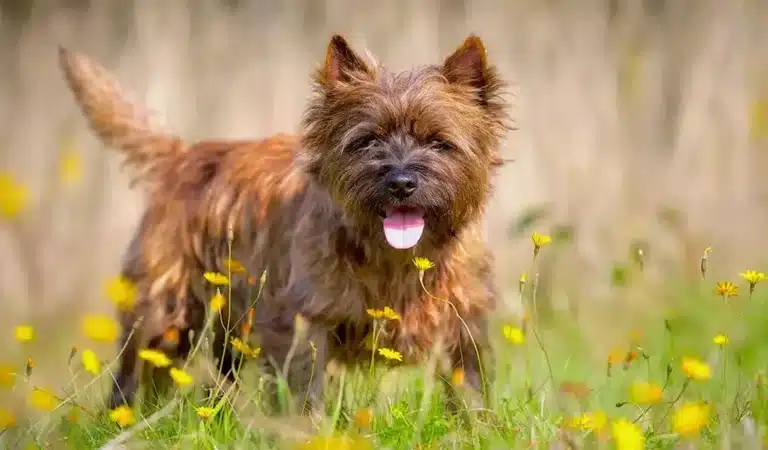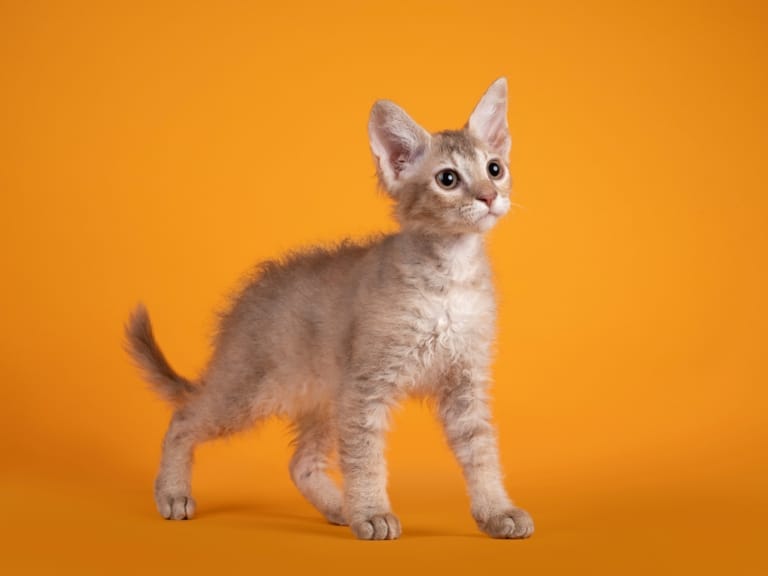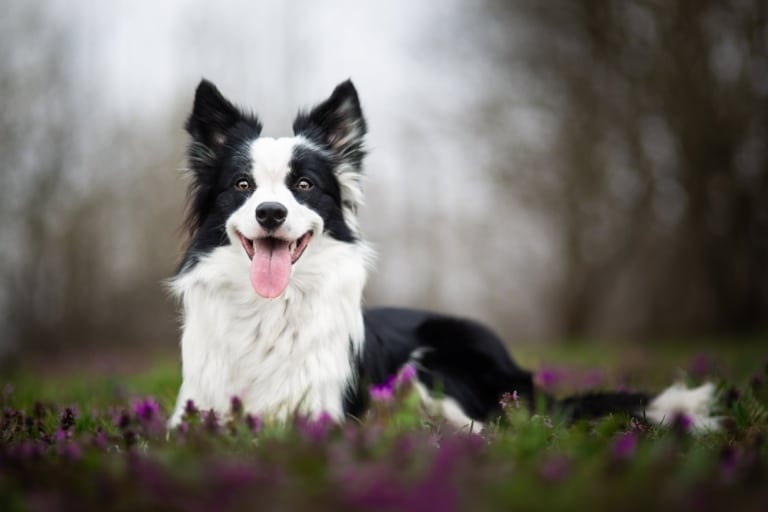
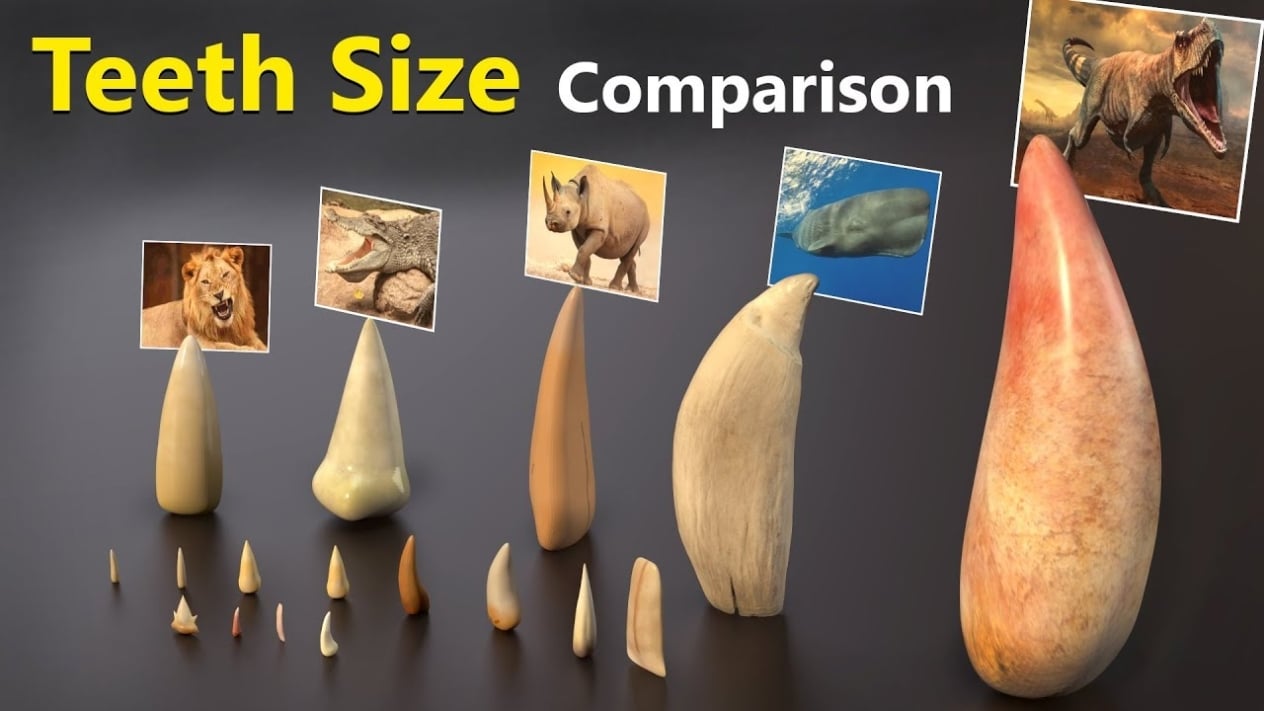
Teeth tell us about an animal’s lifestyle, diet, and even its character. Some have them as sharp as blades, some have them wide and flat, and some species do without them at all. So, how many teeth do different animals have and why has nature arranged it this way?
Dogs – 42 teeth
Pets have 42 teeth, while puppies have only 28 milk teeth. The canines are the main weapon for grabbing and holding prey. The rest of the teeth help tear food into pieces, so dogs rarely chew – they are more likely to tear and swallow. This set of teeth allows them to handle even tough meat and bones.
Cats – 30 teeth
A cat has fewer teeth than a dog, but their shape is a masterpiece of precision. Sharp, curved, they cut like scissors. Cats also don’t chew – they tear, bite off and swallow small pieces. Their jaw does not move sideways, so they physically cannot chew like humans – only cut like nature’s predatory scissors.
Cows – 32 teeth
Just like humans, but with an important difference: cows don’t have upper incisors. Instead, they have a hard plate that they use to “grind” grass. Their teeth are constantly being worn down, so they grow throughout their lives. Interestingly, a cow chews her food several times – that’s why she spends hours “chewing the cud” to get the food from her stomach back into her mouth.
Horses – up to 44 teeth
In horses, the number of teeth depends on the sex: stallions usually have more teeth. Their teeth are constantly regenerating, because rough grass rubs them down daily. This is why a dentist for a horse is not a gimmick, but commonplace. A horse’s age can even be determined by the wear and tear on its teeth – they are a natural calendar of the animal’s life.
An elephant – only 6 teeth, but what teeth!
An elephant has only six teeth – three on each side of its jaw – but they are huge. When the old teeth wear out, new teeth grow in their place. When all six sets wear out, the elephant stops eating and gradually dies. One such tooth can weigh more than 3 kilograms, and it is this tooth that helps to grind hundreds of kilograms of grass every day.
Shark – over 300 teeth
Each shark has several rows of teeth – up to five! On average, it has more than 300, and during its life it can replace them thousands of times. Losing a tooth is no problem for a shark, because a new one grows in a few days. Its “conveyor belt” of teeth works all its life, which makes the shark one of the most efficient hunters on the planet.
Crocodile – 80 teeth
A crocodile has 80 teeth, and each can regenerate up to 50 times. They don’t chew their food – they just grab it and swallow it. But the strength of their jaws is so great that no victim ever breaks free. Scientists believe that if crocodiles lived longer, their teeth could be renewed indefinitely.
The dolphin is the champion among mammals – up to 250 teeth
Dolphins have up to 250 small cone-shaped teeth that help them catch slippery fish. They do not chew but swallow their prey whole, which allows them to feed quickly and efficiently. Their smile is a true optical deception, because the shape of their jaws creates the illusion of a kind smile, even when the dolphin is not happy at all.
The hedgehog is only 36
The little hedgehog has 36 teeth with which he can bite painfully if someone decides to hurt him. Although he looks cute, his teeth are an important part for hunting insects and worms. By the way, the shape of the hedgehog’s teeth resembles miniature human teeth, only sharper – real micro-tools of predatory life.
Parrot – without teeth
Parrots don’t have a single tooth, but that doesn’t make them toothless in the literal sense. Their beak replaces both their teeth and their hands. It is so strong that it can bite nuts like a vise. And thanks to their flexible tongue, parrots can not only eat, but also accurately feel the texture of food, like real tasters.
Turtle – no teeth at all
It doesn’t need teeth: its beak can easily handle leaves or fruit. In sea turtles, it even has sharp edges to cut algae like a knife. Some turtle species have horn plates so hard that they can even bite through a clam shell.

Interesting to know:
The largest teeth are those of the sperm whale, one weighing up to 1 kg.
The smallest are in the mouse: they grow throughout life, but they wear off faster than you can see.
The dolphin and the sea whale have the most teeth among mammals.
Sharks lose and replace their teeth the fastest – in a few days.
Animal dental care is a necessity
Many owners do not even realize that the teeth of animals need to be watched no less, and sometimes even more than their own. After all, a dog or cat will not complain about pain, will not show that their gums hurt or a tooth has fallen out. And tartar, inflammation or bad breath is a real danger to the heart, kidneys and gastrointestinal tract. Infection from the mouth can enter the bloodstream and cause serious complications that the owner often notices too late.
At V.O.G DOG SALON we take care of their health first and foremost. During grooming masters carefully examine the oral cavity, pay attention to the condition of the gums, plaque, and if necessary, clean the teeth.
Do not forget about the necessary care for your Tails.






